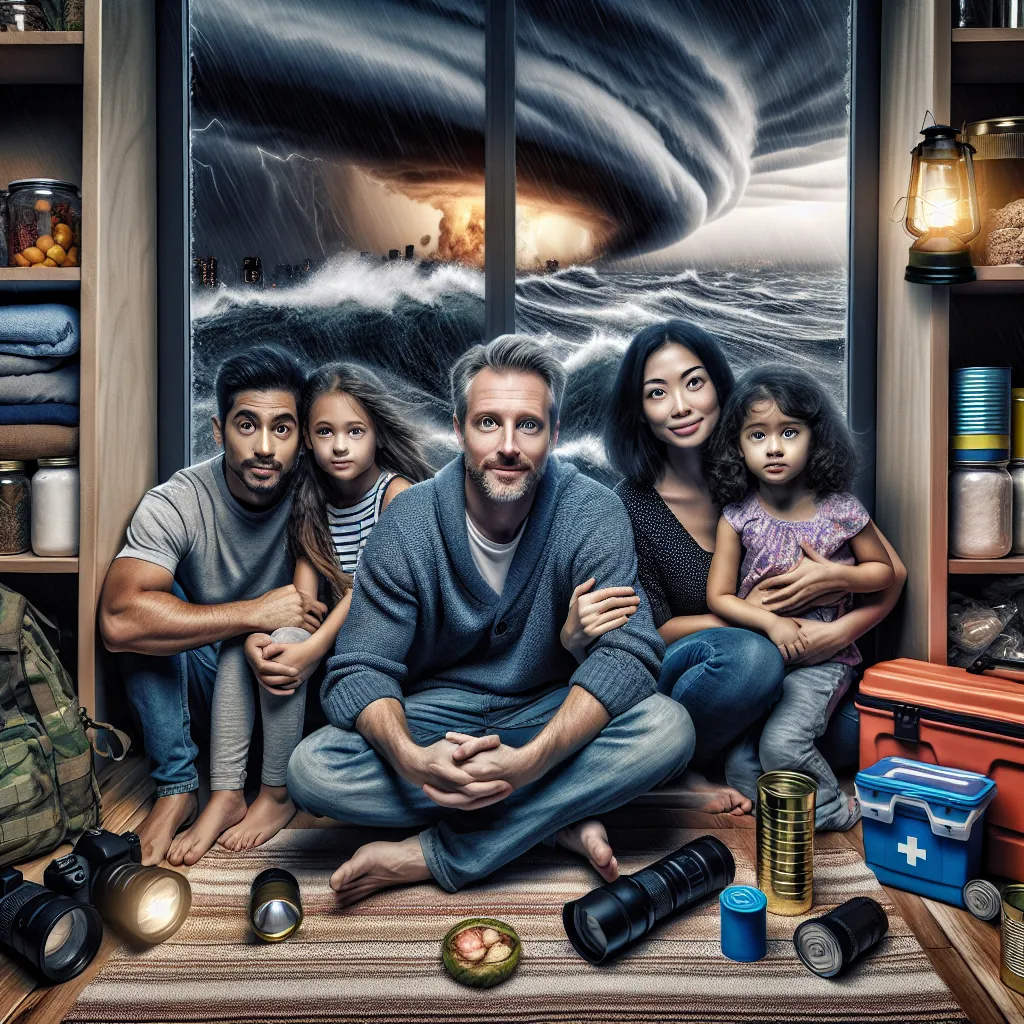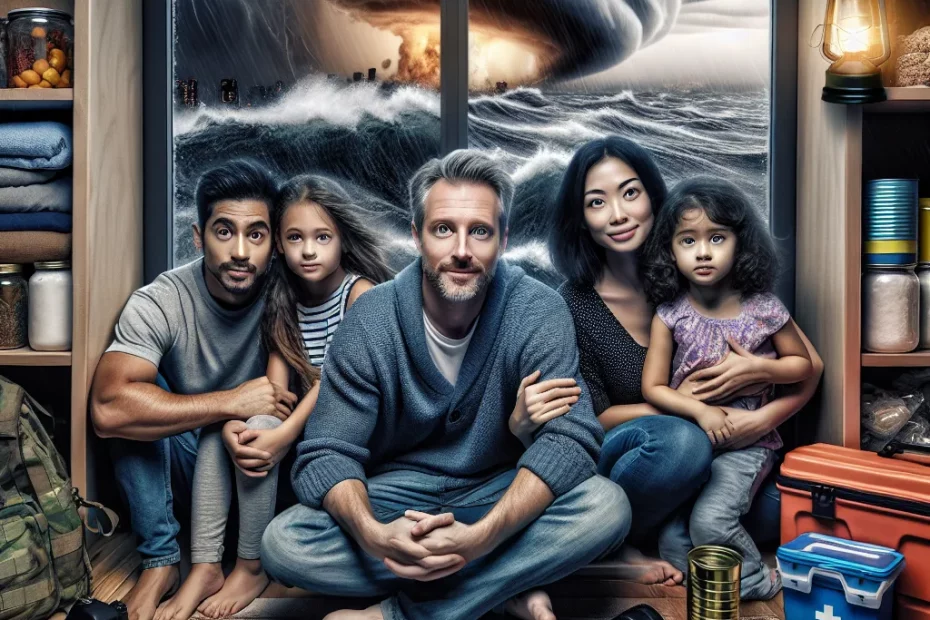Natural disasters can strike at any moment, leaving us vulnerable and in need of quick thinking and preparation. In Korea, earthquakes, typhoons, and other emergencies are a reality that we must be ready for. Understanding the types of natural disasters that can occur in Korea is the first step in being prepared. Creating an emergency plan tailored to earthquakes and typhoons can make all the difference when disaster strikes. Stocking up on essential emergency supplies is crucial to ensuring our safety and well-being during difficult times. Knowing the safety tips to follow during and after a natural disaster in Korea can help us navigate through challenging situations with confidence. Let’s explore how we can be proactive and ready to face whatever comes our way.

Understanding the Types of Natural Disasters in Korea
Hey there, folks! Today, let’s dive into the world of natural disasters in Korea. From earthquakes to typhoons, Korea experiences a variety of emergencies that we all need to be prepared for. So, let’s break it down and get a better understanding of the types of natural disasters that can occur in Korea!
Typhoons
🌪️ Typhoons: Did you know that Korea is no stranger to powerful typhoons? With an average of 3 to 4 typhoons hitting the Korean peninsula each year, these intense tropical storms bring heavy rain, strong winds, and sometimes even flooding. It’s crucial to stay informed and have a plan in place to stay safe during typhoon season!
Earthquakes
🌋 Earthquakes: Korea may not be as seismically active as some other countries, but earthquakes still pose a threat. The southeastern region of Korea, especially around Gyeongju, has experienced significant earthquakes in the past. Knowing what to do during an earthquake and having emergency supplies ready can make all the difference.
Wildfires
🔥 Wildfires: In recent years, Korea has seen an increase in wildfires, particularly during dry seasons. These fast-spreading fires can devastate forests and homes in their path. Being aware of fire danger levels and following fire safety guidelines are essential to prevent wildfires and protect lives.
Flooding
🌊 Flooding: With its mountainous terrain and monsoon season, Korea is prone to flooding, especially in low-lying areas. Heavy rainfall can lead to flash floods, causing damage to infrastructure and posing risks to residents. Understanding flood risks in your area and having an evacuation plan are key to staying safe.
Heavy Rainfall
☔ Heavy Rainfall: Monsoon season in Korea brings heavy rainfall, leading to landslides and flooding. The amount of rainfall during monsoon season can be staggering, so being prepared for potential water damage and landslides is crucial for everyone living in Korea.
So, there you have it – a glimpse into the types of natural disasters that can occur in Korea. By understanding these risks and being prepared, we can all stay safe and resilient in the face of emergencies. Remember, it’s better to be over-prepared than caught off guard when disaster strikes! Stay safe, everyone!
Creating an Emergency Plan for Earthquakes and Typhoons
Hey there, folks! Today, let’s talk about creating an emergency plan for earthquakes and typhoons in Korea. These natural disasters can strike at any time, so it’s crucial to be prepared and have a plan in place. 🌪️⛑️
Earthquake Preparedness
First things first, let’s start with earthquake preparedness. Did you know that Korea experiences over 100 earthquakes each year? It’s important to secure heavy furniture, like bookshelves and cabinets, to prevent them from toppling over during a quake. 📚 Additionally, having emergency supplies such as non-perishable food, water, flashlights, and a first aid kit can make a huge difference in the aftermath of a tremor. 🥫💧🔦
Typhoon Readiness
Now, let’s shift our focus to typhoon readiness. With Korea being prone to typhoons during the summer and fall months, it’s essential to have a plan in place. Make sure to trim any overhanging branches and secure outdoor furniture to prevent them from becoming projectiles in strong winds. 🌳💨 Furthermore, having a communication plan with your family members and knowing the nearest evacuation shelters can ensure everyone’s safety during a typhoon. 🏠📱
In case of an emergency, always remember to stay informed through reliable sources like the Korea Meteorological Administration and follow their guidelines for safety. 🌐☔️ And most importantly, stay calm and support each other during these challenging times. Remember, being prepared is the key to staying safe during natural disasters. Take care and stay safe, everyone! 🌏🌟
Essential Emergency Supplies to Prepare for Natural Disasters
Hey there, folks! Today, let’s talk about something super important – being prepared for natural disasters like earthquakes, typhoons, and other emergencies here in Korea. When Mother Nature decides to throw a curveball, it’s crucial to have the right supplies on hand to keep you and your loved ones safe and sound. So, let’s dive into the must-have emergency supplies you should have ready to go!
Water
First things first, let’s talk about water. You’ll need at least one gallon of water per person per day for at least three days. Hydration is key, amigos! 🚰
Non-Perishable Food
Next up, non-perishable food is a must. Stock up on canned goods, energy bars, and other easy-to-prepare items. Don’t forget a manual can opener, too! 🥫
Flashlights and Batteries
Now, let’s shed some light on the situation – flashlights with extra batteries are essential. When the lights go out, you’ll be glad you have these handy dandy tools. 💡
Candles and Matches
Speaking of lights, candles and matches are also great to have in case of a power outage. Just remember to use them safely! 🕯️
First Aid Kit
It’s always a good idea to have a first aid kit on hand. You never know when a band-aid or some antiseptic wipes might come in handy. Safety first, right? 🩹
Emergency Blankets
Emergency blankets are another must-have. They’re compact, lightweight, and can keep you warm in case you need to evacuate or if the heating goes out. 🛌
Personal Hygiene Items
Don’t forget about personal hygiene items like toothbrushes, toothpaste, hand sanitizer, and wet wipes. Staying clean and healthy is crucial during an emergency. 🧼
Whistle
And last but not least, have a whistle on hand. It’s a simple tool, but it can help rescuers locate you if you’re in a sticky situation. 📣
Remember, folks, being prepared is half the battle when it comes to natural disasters. So, gather up these essential emergency supplies, store them in a safe and easily accessible place, and stay safe out there, amigos! 🌪️🌊🔦
Safety Tips During and After Natural Disasters in Korea
Hey there, folks! Today, let’s talk about staying safe during and after natural disasters in Korea. Whether it’s an earthquake, typhoon, or any other emergency, being prepared can make all the difference. So, let’s dive into some essential safety tips to help you weather the storm – quite literally!
Earthquake Safety Tips
First things first, let’s talk about earthquakes. Did you know that Korea experiences over 100 earthquakes each year? It’s crucial to know what to do when the ground starts shaking. Remember to “Drop, Cover, and Hold On!” Find a sturdy table or desk to take cover under, and hold on until the shaking stops. It’s also a good idea to have an emergency kit with essentials like water, food, and a flashlight ready to go.
Typhoon Safety Tips
Now, let’s shift our focus to typhoons. With Korea being prone to typhoons during the summer and fall months, it’s important to be prepared. Keep an eye on weather forecasts and listen to official announcements. Secure outdoor objects that could become projectiles in high winds, and stay indoors during the storm. If you’re in a flood-prone area, be ready to evacuate to higher ground if necessary.
Aftermath Safety Tips
After a natural disaster strikes, the aftermath can be just as challenging. Check for any injuries and administer first aid if needed. Inspect your home for damage, and if it’s not safe, evacuate until it can be properly assessed. Stay tuned to local news and follow instructions from authorities. Remember, safety first!
In conclusion, being prepared and knowing what to do during and after natural disasters in Korea can save lives. Stay informed, have a plan in place, and be ready to act quickly. Let’s all do our part to stay safe and look out for one another. Stay safe, everyone!
In conclusion, it is crucial to be well-prepared for natural disasters in Korea. By understanding the types of disasters that can occur, creating an emergency plan, and stocking up on essential supplies, you can ensure the safety of yourself and your loved ones. Remember to stay informed, stay safe, and stay connected with your community during and after any emergency. Being proactive and taking necessary precautions will help you navigate through challenging times more effectively. Stay safe, and remember that being prepared is key to facing any natural disaster that may come your way.
